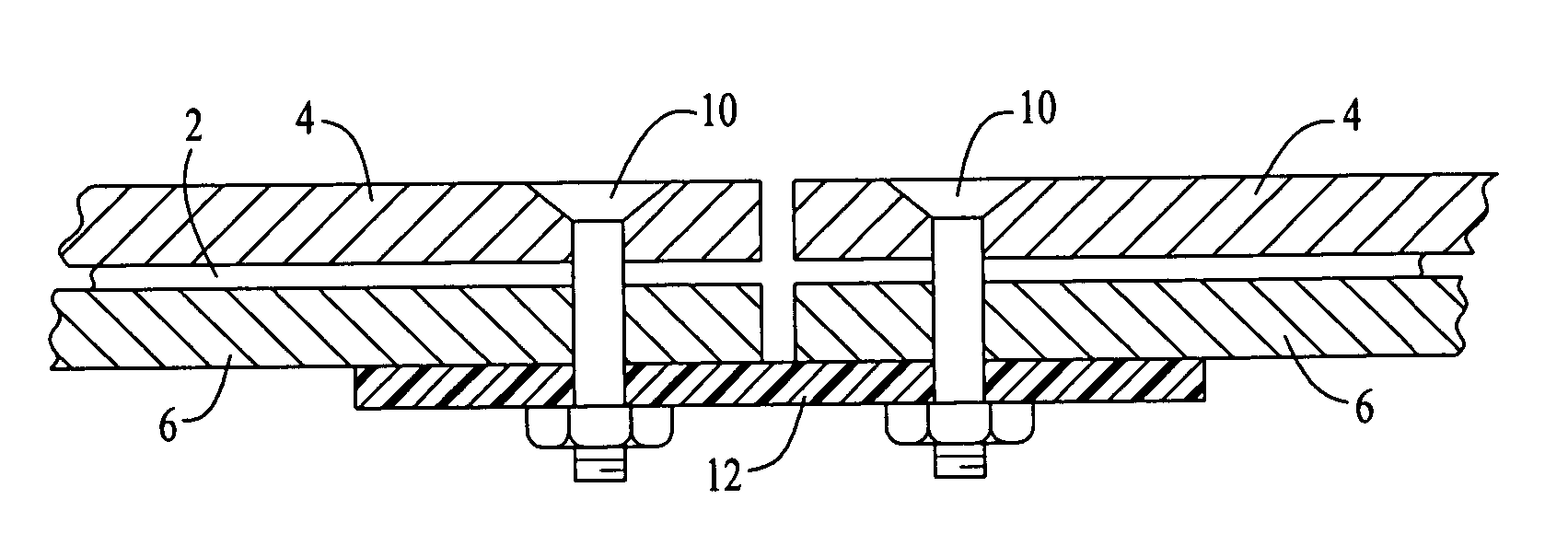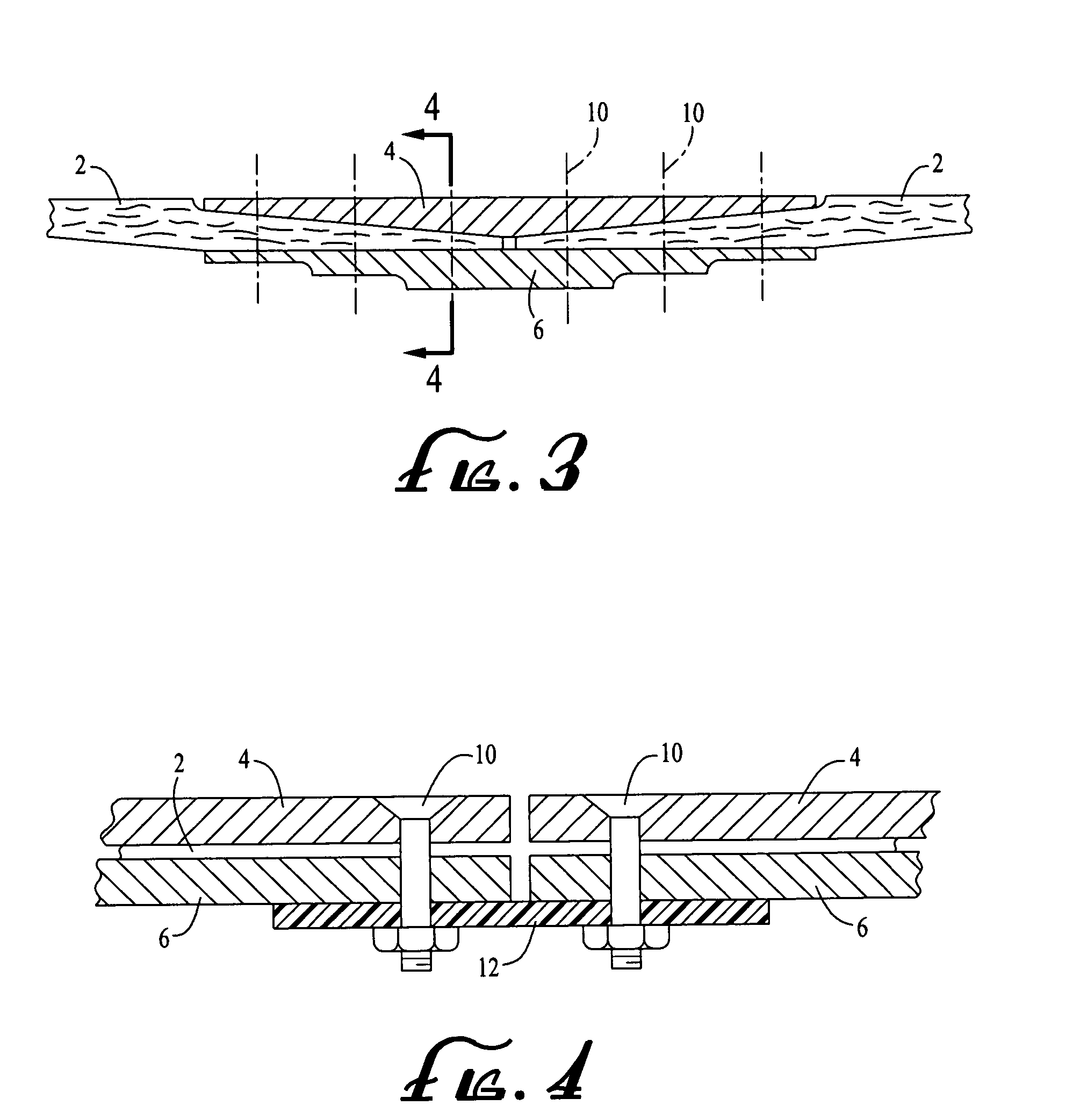Lightning damage protection for composite aircraft
a composite aircraft and damage protection technology, applied in the direction of aircraft static dischargers, emergency protective arrangements for limiting excess voltage/current, electrostatic charges, etc., can solve the problems of increasing complexity and expense, severe structural damage to unprotected composite structures and their contents, and increasing weight, etc., to achieve simple and less expensive implementation, light weight
- Summary
- Abstract
- Description
- Claims
- Application Information
AI Technical Summary
Benefits of technology
Problems solved by technology
Method used
Image
Examples
Embodiment Construction
[0019]FIG. 1 is a top plan view of a composite, BWB-type of aircraft 1 incorporating one embodiment of the present lightning damage protection system 100. Although the system of the present embodiments is shown in conjunction with a BWB type of aircraft, it should be understood that the system is not limited to such aircraft types, but may be advantageously employed with conventional composite-bodied aircraft, as well.
[0020]As illustrated in FIG. 1, the structure of the aircraft 1 may be seen to comprise a plurality of polygonal composite panels 2, i.e., structural skin panels made of plies of a fibrous material, e.g., “carbon” or graphite fibers, which are embedded in an epoxy resin to form a strong, rigid, light weight matrix. The panels are typically made, or “laid up,” separately, and then joined to each other at their respective edges by exterior and interior splice plates 4 and 6, respectively, as illustrated in the partial cross-sectional views of FIGS. 2 and 3. The aircraft ...
PUM
 Login to View More
Login to View More Abstract
Description
Claims
Application Information
 Login to View More
Login to View More - R&D
- Intellectual Property
- Life Sciences
- Materials
- Tech Scout
- Unparalleled Data Quality
- Higher Quality Content
- 60% Fewer Hallucinations
Browse by: Latest US Patents, China's latest patents, Technical Efficacy Thesaurus, Application Domain, Technology Topic, Popular Technical Reports.
© 2025 PatSnap. All rights reserved.Legal|Privacy policy|Modern Slavery Act Transparency Statement|Sitemap|About US| Contact US: help@patsnap.com



